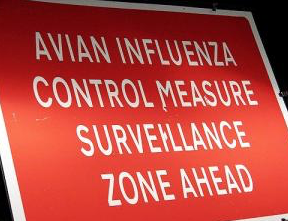 On March 12, 2018, the World Organisation for Animal Health (OIE) announced that routine, pre-slaughter testing and surveillance for H5/H7 avian influenza had detected H7N1 low-pathogenic avian influenza (LPAI) in a commercial broiler breeder flock in Hopkins County, Texas.
On March 12, 2018, the World Organisation for Animal Health (OIE) announced that routine, pre-slaughter testing and surveillance for H5/H7 avian influenza had detected H7N1 low-pathogenic avian influenza (LPAI) in a commercial broiler breeder flock in Hopkins County, Texas.
Partial HA sequencing determined the H7 to be a low-pathogenic virus of North American wild bird lineage, 98 percent similar to that previously found in northern shoveler waterfowl. N1 was confirmed based upon antibody; further characterization is pending virus recovery and sequencing.
The USDA Animal Plant Health Inspection Service (APHIS) and the Texas Animal Health Commission are conducting a comprehensive epidemiological investigation of this incident and have implemented enhanced surveillance and testing within 10km of this finding.
On March 6, the Texas Animal Health Commission (TAHC) was notified by the Texas A&M Veterinary Medical Diagnostic Laboratory (TVMDL) of 22 AI-ELISA positives (of those 16 AI AGID positive) from the farm. TAHC placed the premise on hold March 6.
Positive serology was detected during routine pre-slaughter tests sampled on March 2, 2018. No signs of clinical illness or significant increase in mortality were reported at the farm by management. The company veterinarian reported a 1-1.5% increase in mortality and a 20% drop in production. The birds were 57-week-old hens and roosters. Depopulation of the premises was underway.
The affected premises consists of 2 houses. The index house that tested negative consists of 11,294 hens and 959 roosters. The second index house that had the positive results reports a slight increase in mortality and consists of 11,064 hens and 774 roosters. A second group of 4 houses under the same ownership is within ½ mile consists of 4 pullet houses. Pullet houses tested negative 2 weeks ago per management. It is noted that the affected index premises contains old, partially filled catfish farms.
APHIS confirmed the subtype is H7N1, and noted that this is the same strain that was reported to OIE on March 6, 2018 from a Missouri turkey flock. The agency said it is interesting to note that Missouri is in the migratory waterfowl Mississippi flyway and Texas is in the migratory waterfowl Central flyway.
Results thus far suggest an active infection with variable viral shedding and incomplete sero-conversion.
Control measures applied include:
– Movement control inside the country
– Surveillance outside containment and/or protection zone
– Surveillance within containment and/or protection zone
– Quarantine
– Zoning
– Vaccination prohibited
– No treatment of affected animals
Measures to be applied include disinfection.
The company has sent a request for indemnification through the state veterinarian to USDA for consideration.
NOTE: Information for this report was collected from the World Organisation for Animal Health and a USDA/APHIS situation report obtained by the North American Gamebird Association.


